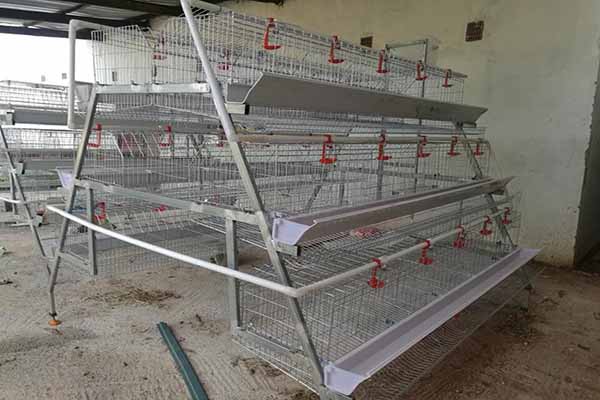Sustainable Poultry Cage Systems for Modern Farming
Time : 2025-06-25
The poultry industry has been a cornerstone of modern agriculture, providing essential protein sources for billions of people worldwide. However, traditional poultry farming practices have often resulted in environmental degradation and poor animal welfare. The shift towards sustainable poultry cage systems is a crucial step in addressing these challenges. This article delves into the intricacies of sustainable poultry cage systems, their benefits, and how they are shaping modern farming practices.
Introduction to Sustainable Poultry Cage Systems
Sustainable poultry cage systems are designed to minimize the environmental impact of poultry farming while ensuring optimal animal welfare and productivity. These systems integrate advanced technologies and innovative designs to create a balanced and efficient farming environment.
Key Components of Sustainable Poultry Cage Systems
1. Material Selection: The choice of materials is vital for sustainability. Eco-friendly materials such as recycled plastic and steel are preferred over traditional materials like wood or concrete.
2. Energy Efficiency: Efficient lighting and heating systems are crucial to reduce energy consumption. LED lighting and renewable energy sources like solar panels are commonly used.
3. Aeration and Ventilation: Proper aeration and ventilation are essential for maintaining a healthy environment. Systems are designed to ensure a consistent flow of fresh air while minimizing heat loss.
4. Manure Management: Efficient manure management systems are integral to reducing environmental pollution. These systems include composting and bio-gas production facilities.
5. Animal Welfare: The design of sustainable cages considers the comfort and well-being of the birds. Features like adjustable perches, scratching areas, and space for movement are included.
Benefits of Sustainable Poultry Cage Systems
Environmental Impact
1. Reduced Emissions: By using renewable energy sources and efficient systems, sustainable poultry cage systems significantly reduce greenhouse gas emissions.
2. Waste Reduction: Efficient manure management systems reduce the amount of waste produced, minimizing pollution and the need for landfills.
3. Water Conservation: Advanced water recycling and treatment systems ensure minimal water usage and pollution.
Animal Welfare
1. Improved Health: Proper ventilation and hygiene reduce the incidence of diseases, leading to healthier birds.
2. Comfortable Living Conditions: The design of sustainable cages ensures that birds have ample space and comfortable living conditions.
Economic Advantages
1. Increased Productivity: By creating a healthy and stress-free environment, sustainable poultry cage systems can lead to higher productivity and better quality of poultry products.
2. Cost Savings: Long-term energy and waste management savings offset the initial investment in sustainable systems.
Implementation of Sustainable Poultry Cage Systems
Design and Planning
The design of sustainable poultry cage systems requires careful planning and consideration of various factors:
1. Climate and Environment: The design should be tailored to the specific climate and environmental conditions of the farming location.
2. Bird Species: Different bird species have different requirements, and the design should be adapted accordingly.
3. Scale of Operation: The design should cater to the scale of the farming operation, from small-scale family farms to large-scale commercial operations.
Technology Integration
1. Automated Systems: Automated feeding, watering, and monitoring systems improve efficiency and reduce labor costs.
2. Data Analytics: Integration of data analytics allows for real-time monitoring and management of the farming operation.
Case Studies
Case Study 1: Organic Farming Company
An organic farming company in Europe implemented a sustainable poultry cage system. The system included solar panels for energy, an advanced manure management system, and LED lighting. The results were a 30% reduction in energy consumption and a 20% increase in productivity.
Case Study 2: Large-scale Commercial Farm
A large-scale commercial farm in the United States replaced their traditional poultry cages with sustainable ones. The new system included automated feeding systems, advanced ventilation, and a bio-gas production facility. The farm achieved a 50% reduction in waste and a 40% increase in bird welfare scores.
Conclusion
Sustainable poultry cage systems are a crucial component of modern farming practices. By integrating advanced technologies and innovative designs, these systems address environmental concerns, improve animal welfare, and enhance economic viability. As the poultry industry continues to evolve, the adoption of sustainable cage systems will be essential for a sustainable and prosperous future.
Tags












